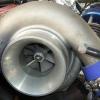Announcements
-
Similar Content
-
Latest Posts
-
I hate to interrupt, there are enough internet rumors. I do build every single CORE in house that leaves my workshop including the one that you are using, as well as engineering work done on your turbo housings. Reason been is I got shafted badly by a turbo joint 18 years ago when the business first started. I since trusted no one when comes to selling anything under my name, or I just don't touch them at all.
-
By Murray_Calavera · Posted
@MBS206 yeah it's a short run from battery in boot to pump -
On a 20amp run, on "12V", if you're getting power for the pump direct from battery in the boot, you should be good on 12AWG. If the wiring is from up front, you want to get to a 10awg.
-
Got the speakers wired up in the doors today. I end up cutting the wire where I could access it and put new speaker wire on to run down to the crossovers and ran them to woofer and tweeter. I used the original speaker wire that went down to woofer to reuse the crimps. Mate said he has a spot free to fab my intercooler pipes, dump and other bits and pieces on Monday so I started getting shit out and putting everything together that needs to go down with it. Got the rad in so he can fab the new top pipe to the hypertune hose as well.
-









Recommended Posts
Create an account or sign in to comment
You need to be a member in order to leave a comment
Create an account
Sign up for a new account in our community. It's easy!
Register a new accountSign in
Already have an account? Sign in here.
Sign In Now